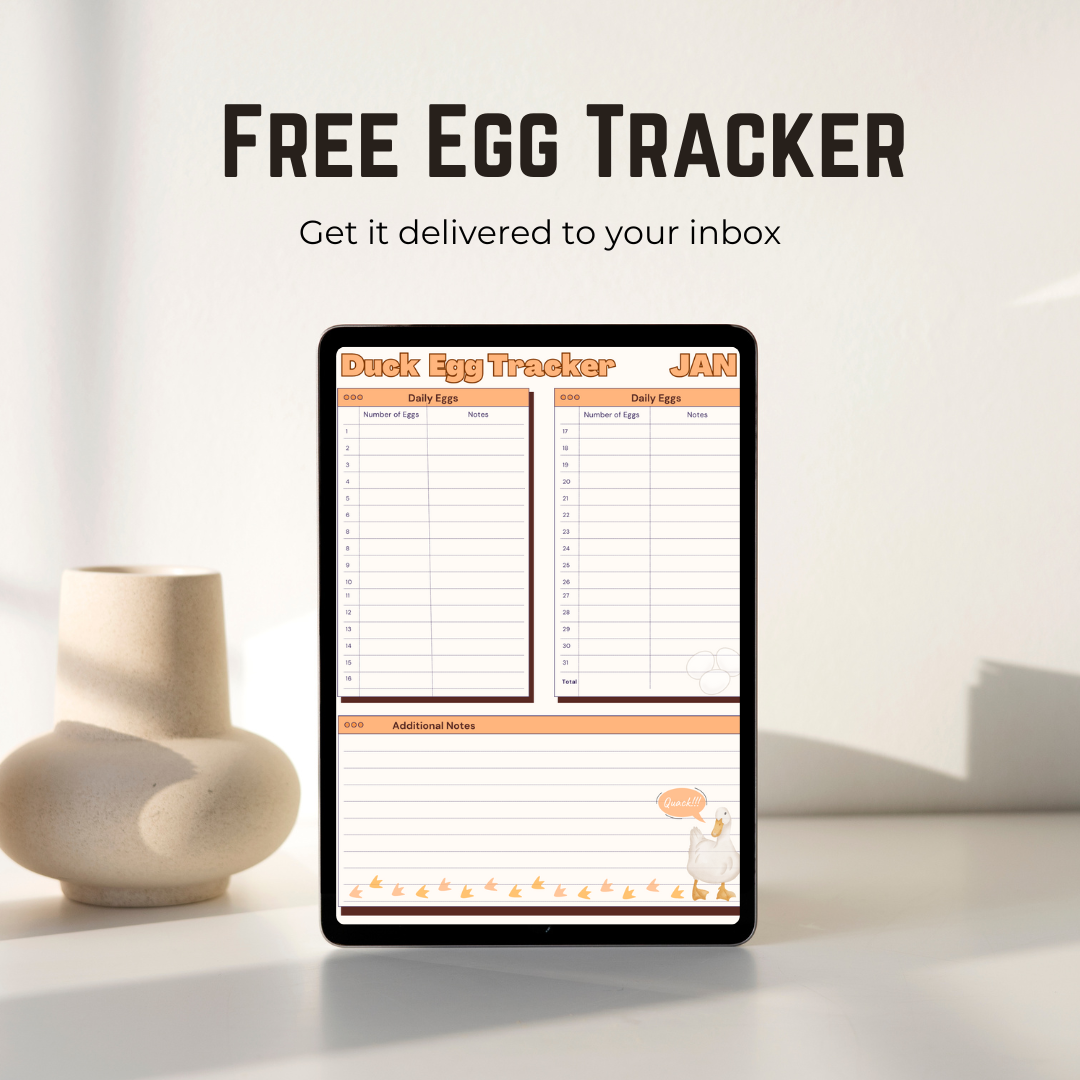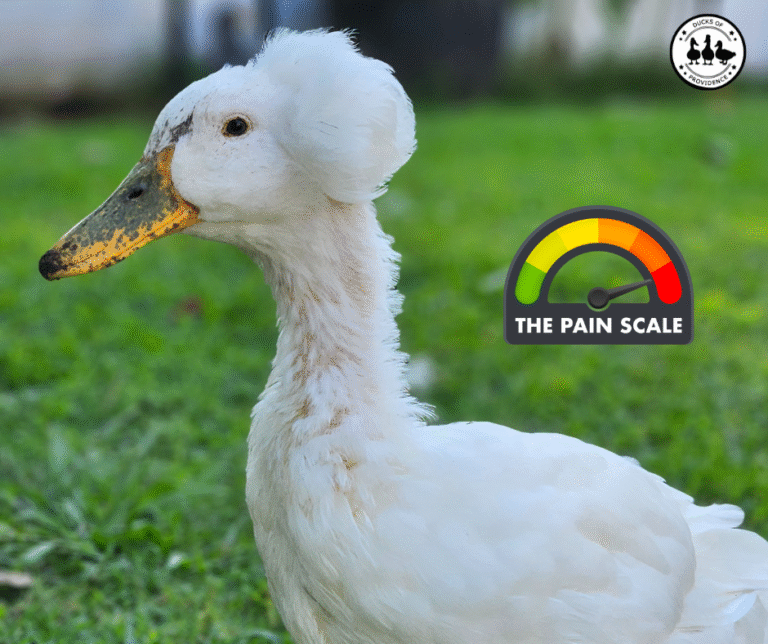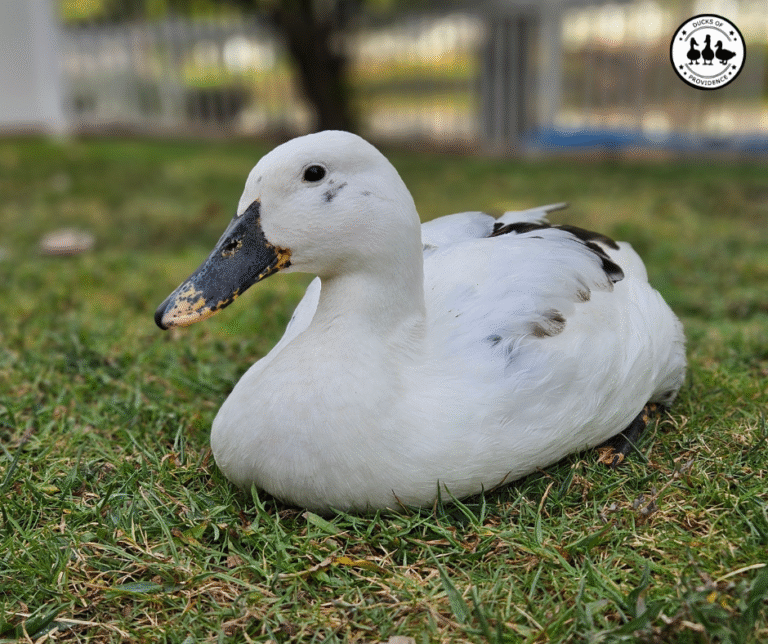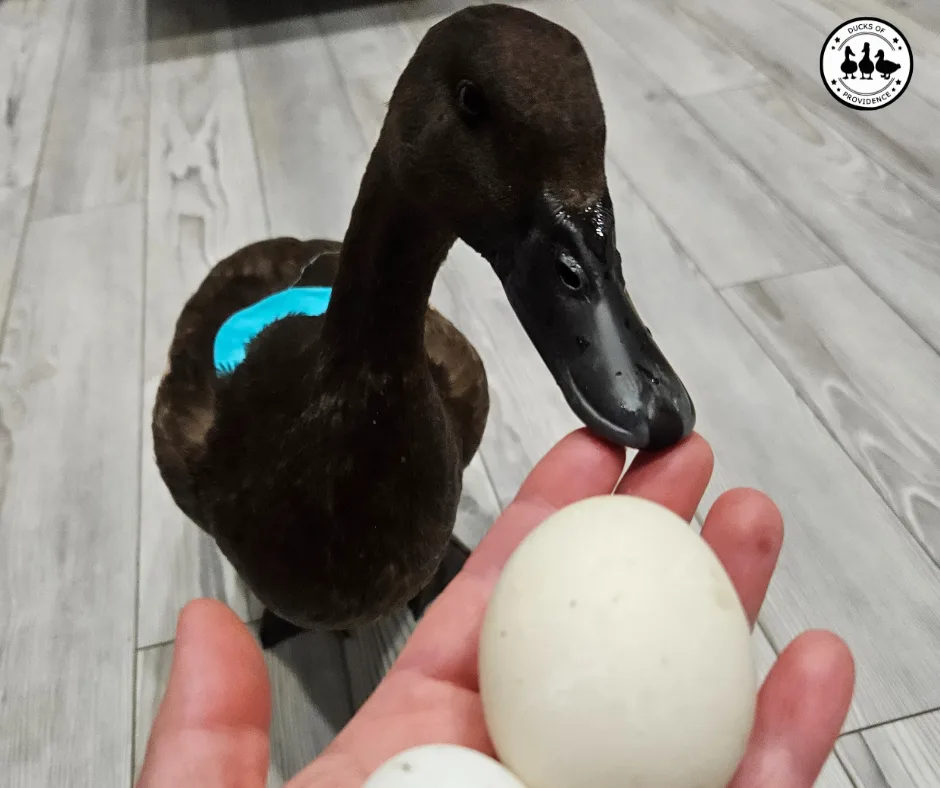
Is My Duck Laying Eggs? Signs to Look For in Your Flock
Last updated on February 6th, 2025 at 07:15 pm
Knowing whether your duck is laying eggs can be both exciting and essential for managing your flock. Ducks show several physical and behavioral signs when they are actively laying or about to start. Below is a comprehensive guide to help you identify these clues and understand your ducks better.
Disclaimer: I may earn a commission if you buy products or services through my affiliate links. This will not affect the price you pay. I only recommend products or services that I believe will be beneficial to my readers.
1. Has your Duck the right Age?
Most ducks begin laying eggs between 4 and 6 months old, depending on their breed and the season. For example, breeds like Khaki Campbells and Runners may start laying eggs as early as 4 months, while larger breeds like Pekins and Muscovies may take closer to 6 months.
Additionally, ducks that reach this age during the winter months may delay laying until daylight increases in spring. Keep in mind that individual ducks can vary, and environmental factors such as diet, health, and stress levels can also influence when they start laying.
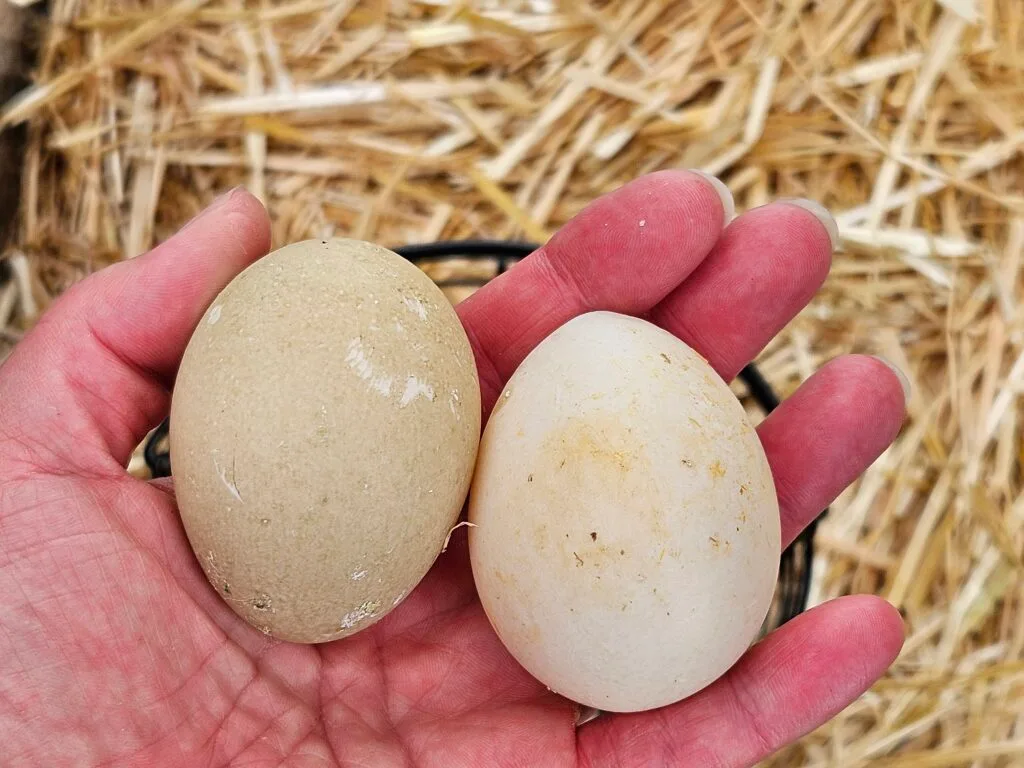
Ducks typically continue laying eggs reliably for about 2 to 3 years, with peak production during their first year. After this period, their egg production gradually declines. By age 5 to 7 years, many ducks stop laying altogether, though this can vary depending on the breed and the duck’s overall health.
Learn more about this in our post How Often Do Ducks Lay Eggs? Breaking Down Duck Egg Production and More.
2. Behavioral Changes
Nesting Behavior
As ducks approach their laying period, they often exhibit nesting behavior by searching for quiet, secluded areas to lay their eggs. You may notice them exploring various spots in their living space, such as corners or hidden areas within their coop. Once they find a suitable spot, ducks will instinctively begin arranging bedding, such as straw, hay, or other soft materials, into a cozy nest. This process can involve a lot of scratching, digging, and spreading bedding around to create the perfect environment. In some cases, ducks will spend weeks preparing their nesting area, creating a comfortable and secure space for laying their eggs. This behavior is particularly prominent in ducks that have already laid eggs in the past, as they are more familiar with the routine.
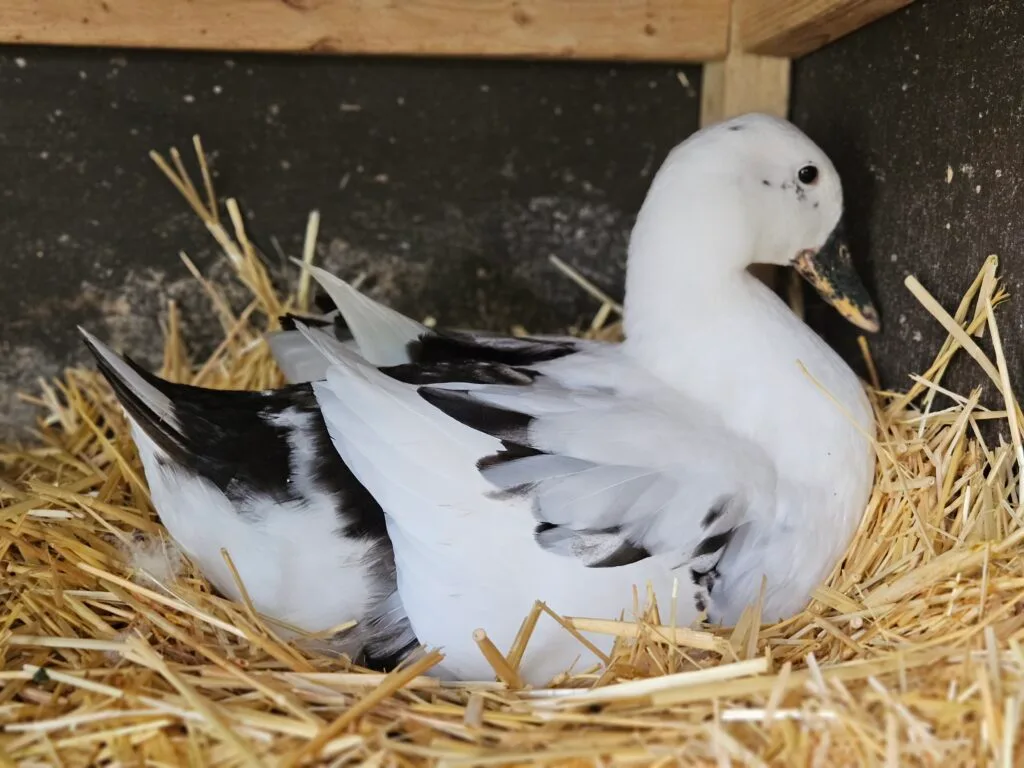
Quiet Demeanor
Another common behavioral change in laying ducks is their shift towards a quieter and more subdued demeanor. As they begin to prepare for egg-laying, many ducks become less active and exhibit a noticeable change in their activity levels. They often prefer to remain in or near their nesting areas, avoiding the usual interactions with the rest of the flock or any other disturbances. This quiet period allows them to focus on their reproductive needs and prepare for the physical process of egg production.
Frequent Sitting
When ducks are preparing to lay eggs, they will often spend more time sitting in one spot, especially in their chosen nesting areas. This behavior is a natural part of their egg-laying preparation, as they may remain still for extended periods to rest or await the right time to lay. Frequent sitting can be a strong indicator that a duck is getting ready to lay, as they often prefer to sit quietly in their nesting box or other secure locations during this phase.
Increased Interest in Nesting Boxes
Ducks may show repeated interest in nesting boxes, investigating and testing them out Ducks will often show increased interest in their nesting boxes leading up to the laying process. This may include repeated visits to the nesting area, where they will investigate and test out different boxes before they consistently begin laying.
They might sit in the boxes, move bedding around, or simply spend time observing the area to ensure it meets their needs. Once they become comfortable with a particular box or spot, they will begin to lay eggs there consistently. Pay attention to any ducks that seem particularly drawn to certain nesting boxes, as this is a clear sign they are preparing to lay.
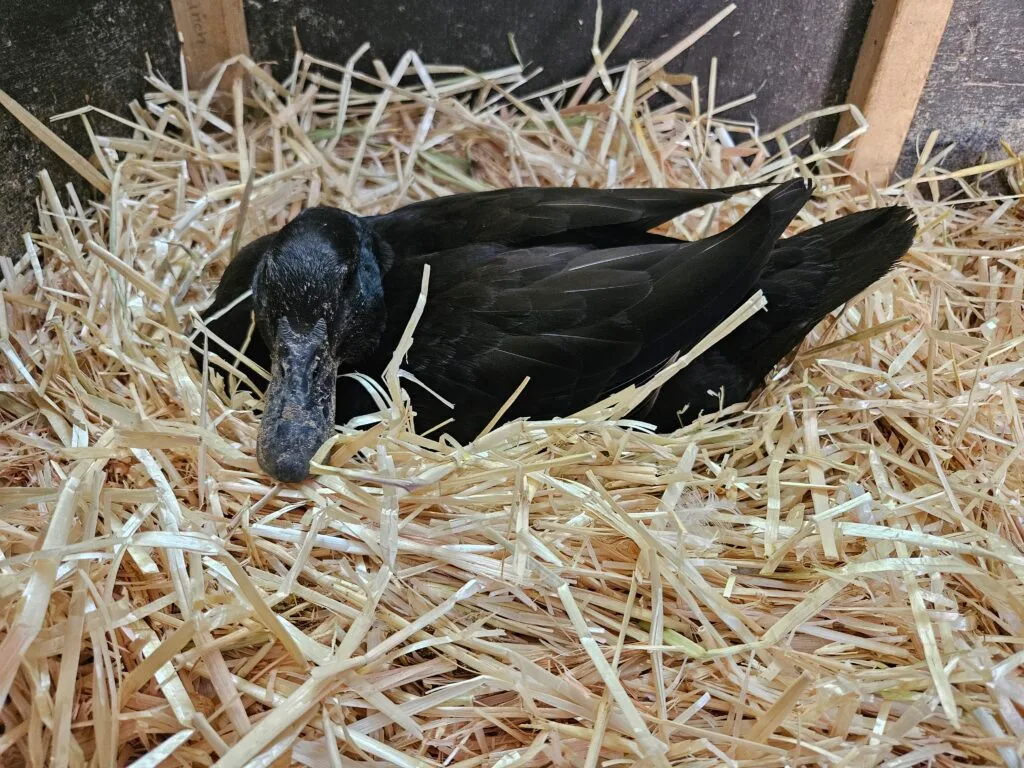
Behavioral Confusion in New Layers
New layers—particularly those who are just starting their egg-laying journey—may display some behavioral confusion. These ducks can appear unsettled or anxious as they learn the process of laying eggs. It’s not uncommon for them to seem clumsy or distracted, as they figure out the best way to manage their new reproductive duties.
This phase of behavioral uncertainty may last for a few weeks as they become accustomed to the routine of laying. During this time, they might be more prone to mistakes or unusual behavior, such as laying in inappropriate spots or not fully understanding how to care for their eggs. As they establish a consistent routine, their behavior will generally stabilize.
3. Physical Signs
Pelvic Bone Measurement
One of the most reliable and effective methods for determining whether a duck is about to lay or actively laying eggs is by measuring the distance between the pelvic bones. The pelvic bones, located just beneath the tail, form part of the duck’s reproductive system, and their spacing changes as the duck’s body prepares to lay eggs. By gently feeling the pelvic area, you can assess whether a duck is nearing her laying cycle.
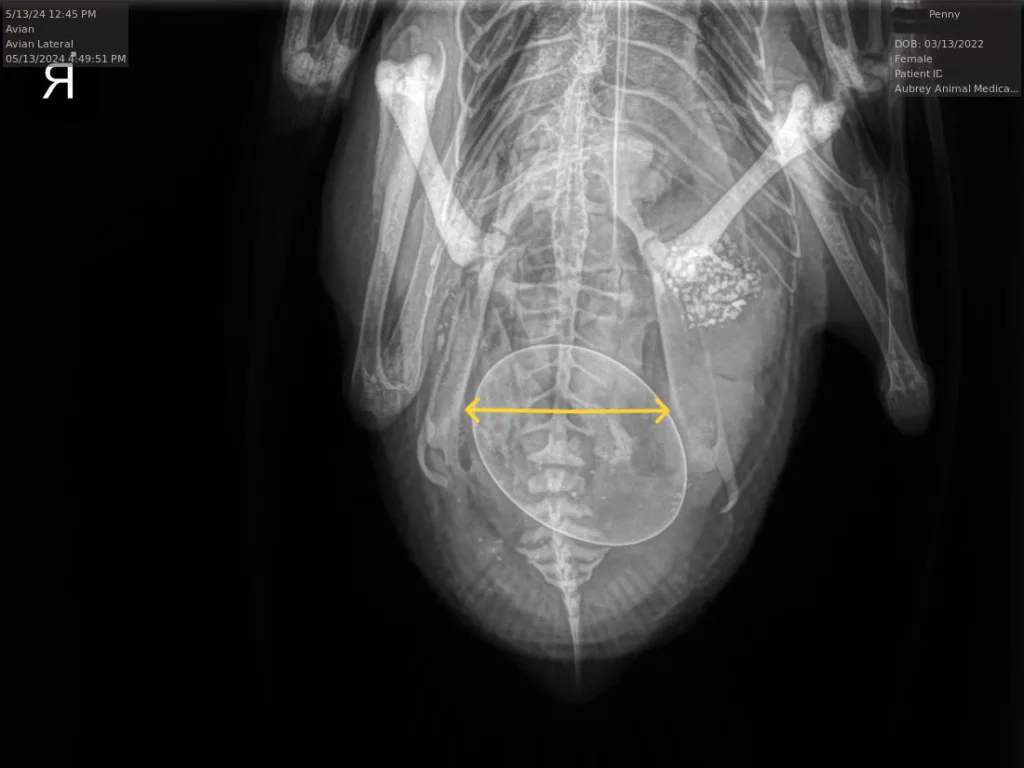
Laying Duck’s Pelvic Bone Spacing:
When a duck is actively laying or getting ready to lay an egg, the body undergoes hormonal changes that cause the pelvic bones to widen. As the reproductive tract expands in preparation for egg production, the space between the pelvic bones will increase. Typically, a laying duck will have a 3-4 finger width between the pelvic bones, although this can vary slightly depending on the duck’s size and breed. This increased spacing allows the egg to pass through the reproductive tract more easily.
You can check this by gently placing your fingers on either side of the pelvic bones. If you can fit about 3-4 fingers comfortably between them, it’s a good sign that the duck is laying or is about to lay. The wider the spacing, the closer the duck is to laying an egg. This method is particularly helpful because it gives you an indication of both the readiness of the duck’s body and whether the egg-laying process is progressing smoothly.
Non-Laying Duck’s Pelvic Bone Spacing:
In contrast, ducks that are not actively laying eggs will have much narrower spacing between their pelvic bones. Typically, the distance between the bones will be closer together, allowing space for only about 2 fingers or less. This is because the reproductive system is not actively preparing for egg production, and the pelvic bones remain in their natural, more compact position. Ducks that have stopped laying, whether due to age, season, or health issues, will generally maintain this narrower spacing between the pelvic bones.
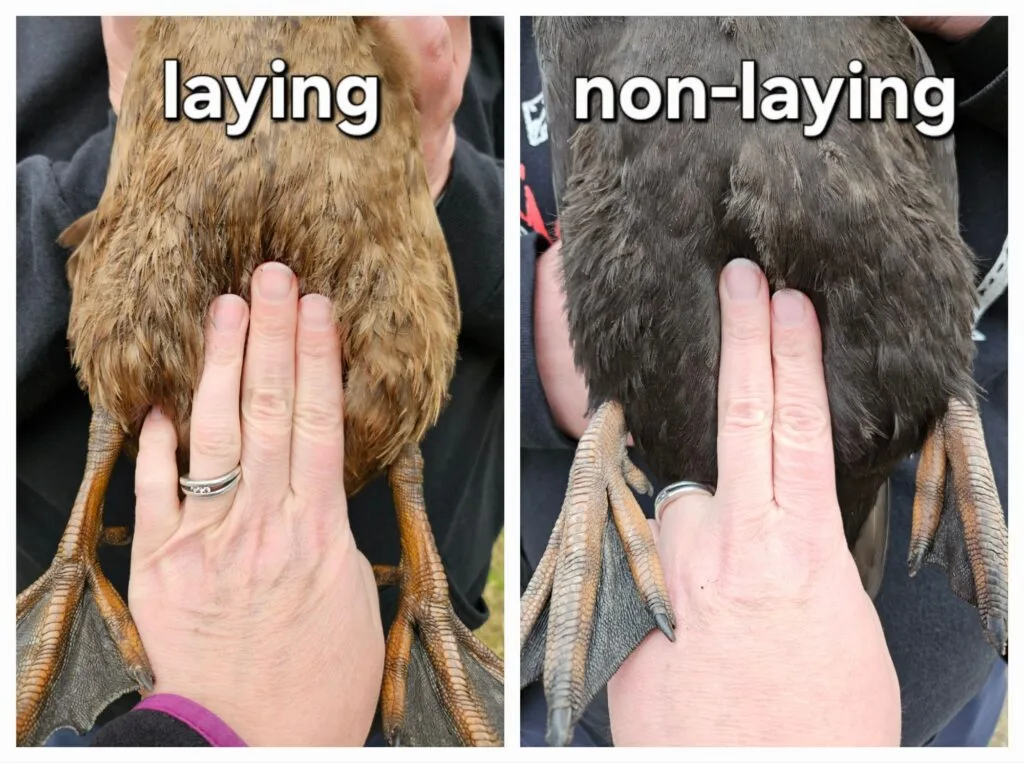
How to Measure Pelvic Bone Spacing:
To measure the pelvic bone spacing, gently place your fingers on either side of the pelvic bones at the base of the tail. With the duck in a calm position, apply gentle pressure to feel the distance between the bones. The more relaxed the duck is, the easier it will be to measure the spacing accurately. It’s important to be gentle during this process to avoid causing the duck any discomfort.
When to Check Pelvic Bone Spacing:
Checking the pelvic bone spacing is particularly helpful during periods when you’re uncertain whether a duck is about to lay, such as after seasonal changes or when introducing a new diet. It can also be used to monitor if a duck is having trouble laying, as the spacing should remain consistent if the laying process is functioning properly.
In summary, pelvic bone measurement is a straightforward and reliable method to determine a duck’s laying status. The wider the space between the pelvic bones, the more likely it is that the duck is either actively laying or is about to lay an egg. By using this method in conjunction with other signs, such as vent appearance and behavior, you can accurately assess the health and productivity of your laying ducks.
Vent Appearance
The appearance of a duck’s vent can provide important clues about whether they are actively laying eggs. A laying duck’s vent will look noticeably different from that of a non-laying duck, and being able to recognize these differences is helpful in monitoring the health and egg production of your flock.
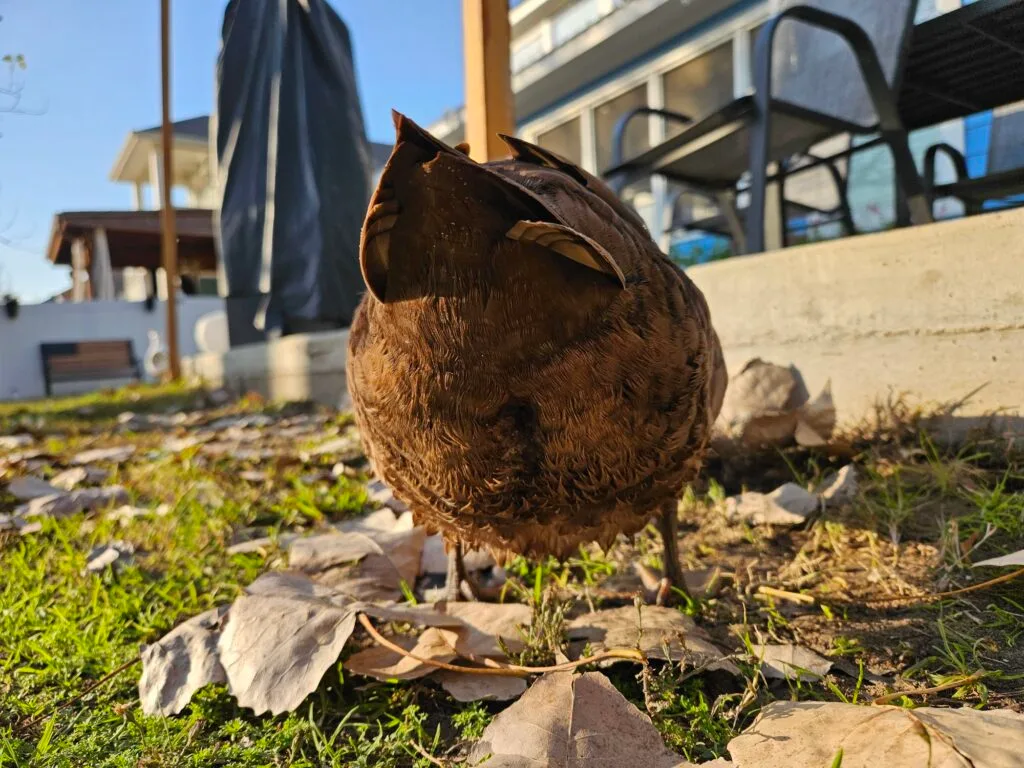
Laying Duck’s Vent:
When a duck is actively laying, her vent will appear moist, wide, and larger. This is due to the increased blood flow and hormonal changes that occur during egg production. The vent, which is the opening for egg-laying, will be slightly open as the duck prepares to release an egg. The moisture is a result of the natural lubrication needed for the egg to pass through the reproductive tract smoothly. In some ducks, you may notice that the vent becomes slightly darker in color or shows more puffiness as it expands to accommodate the egg.
Non-Laying Duck’s Vent:
In contrast, a non-laying duck will have a dry, tight, and smaller vent. The vent will remain closed and compact when the duck is not in the process of laying. If a duck has not been laying eggs for a period of time or is off cycle, the vent will appear less prominent and may feel firm or less moist to the touch. These changes are completely normal during non-laying periods, such as during the molting season or during winter months when ducks tend to lay less frequently.
Changes Over Time:
As your ducks progress through their laying cycle, you might notice fluctuations in the size and appearance of their vents. It’s important to note that if a vent remains unusually small or tight for an extended period, or if you notice unusual dryness or swelling, it could indicate a health issue that requires veterinary attention, such as egg binding or reproductive problems.
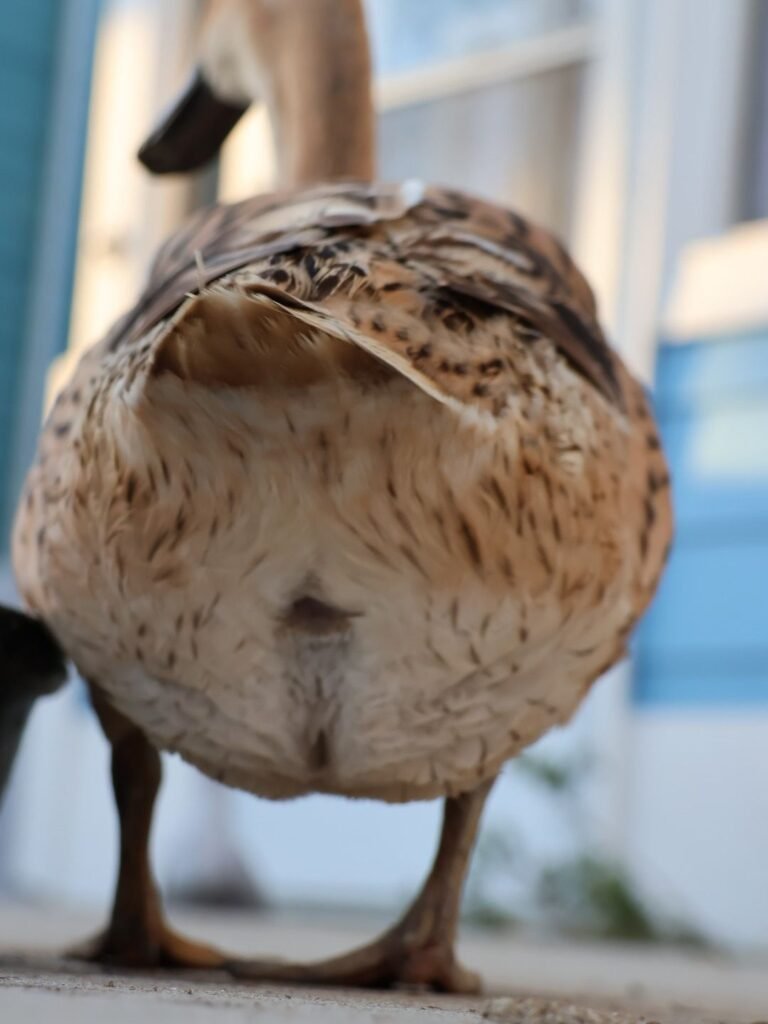
By routinely checking the vent appearance, you can get a better understanding of which ducks are actively laying and monitor their reproductive health. Keep in mind that changes in the vent’s appearance should be considered along with other signs of egg-laying, such as behavior and egg collection patterns, for a full picture of your ducks’ laying status.
Feather Condition
Feather condition is another helpful indicator of whether a duck is actively laying eggs. Laying ducks often experience changes in their plumage, particularly in the intensity and richness of their feather colors. This is especially noticeable in certain breeds, such as Khaki Campbells, who may develop a washed-out or paler appearance in their feathers during the laying season. This happens because the duck’s body is focusing a significant amount of its energy on egg production, which can divert resources from feather maintenance. Consequently, the feathers may not appear as vibrant or well-maintained as those of non-laying ducks.
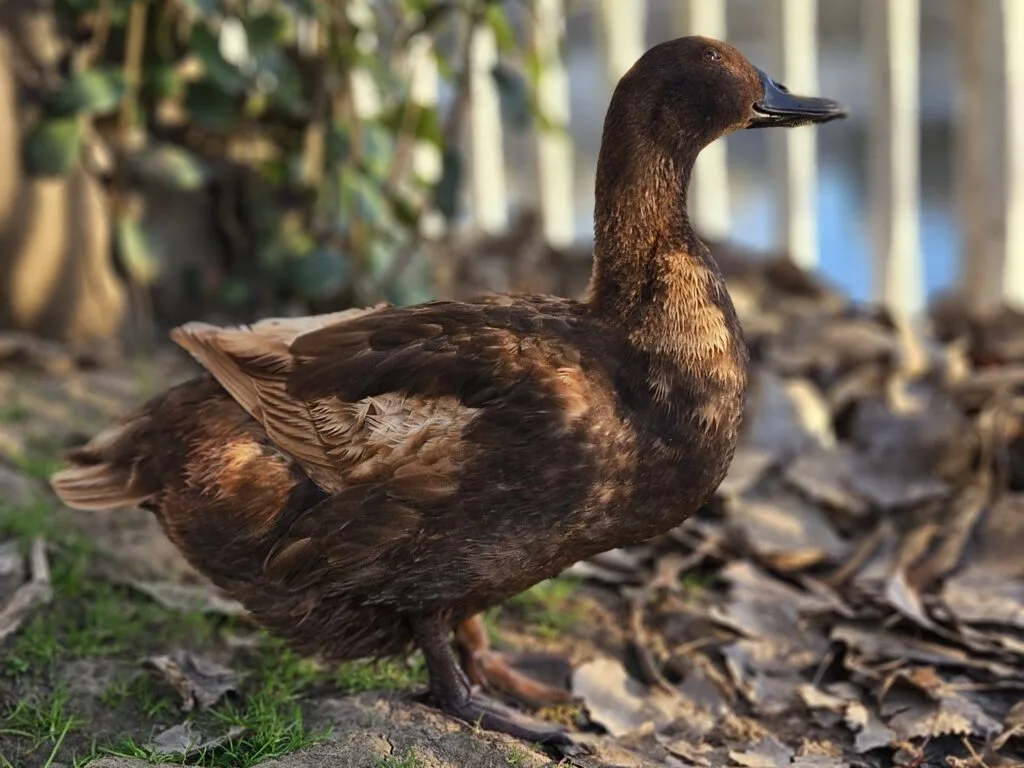
In contrast, younger or non-laying ducks typically have darker, richer feather tones. These ducks are often still growing or are not expending as much energy on reproductive processes, so their feathers retain their full color and luster. However, it’s important to note that feather condition alone is not a definitive indicator of laying, as it can also be influenced by factors like diet, molting, or overall health.
Body Shape
Another key physical change that occurs in laying ducks is the alteration of their body shape, particularly in the abdominal area. As a duck’s body prepares for egg-laying, the abdomen may appear slightly fuller or rounder. This happens because the reproductive system is becoming more active, and the egg-laying process involves the development of eggs in the oviduct, which can cause the abdomen to expand.
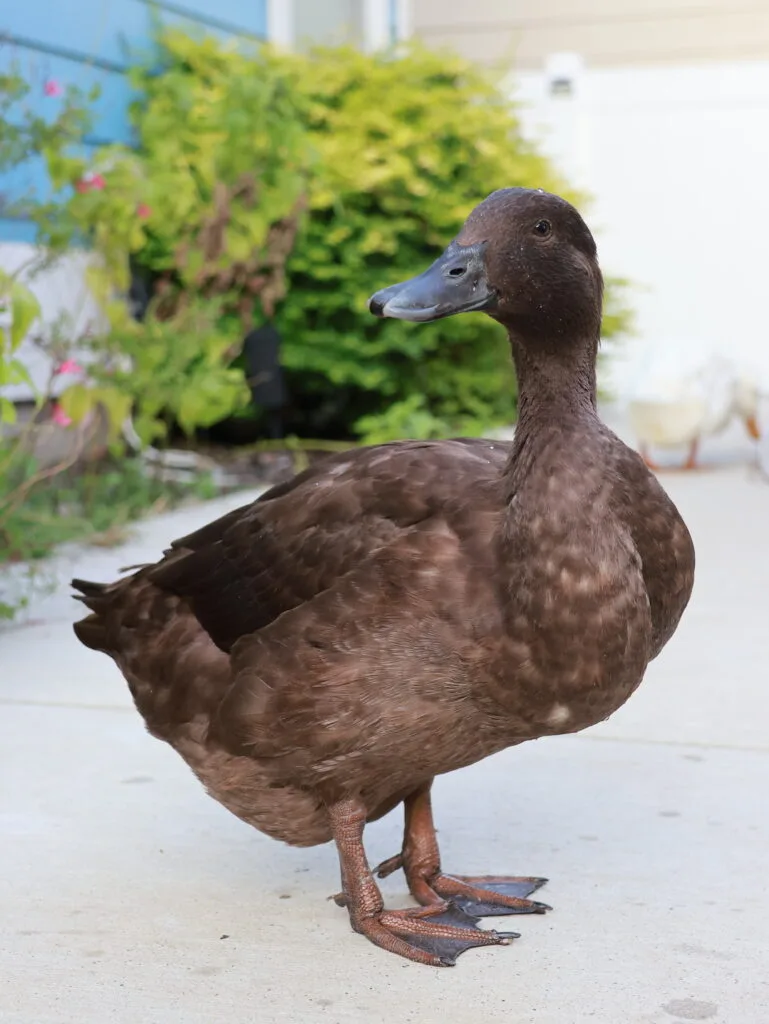
However, this physical change is not always a reliable indicator of laying, as some ducks may experience bloating or other health issues that cause similar changes in body shape. Furthermore, some ducks may not show significant changes in their body shape even when they are actively laying. Therefore, it’s best to use body shape in conjunction with other signs, like vent appearance and pelvic bone spacing, to get a clearer picture of the duck’s reproductive status.
Weight Gain
As the reproductive system becomes more active, some ducks may gain a slight amount of weight. This weight gain is often due to the increase in the size and weight of their reproductive organs, particularly the ovaries and oviduct, as they prepare to produce and lay eggs. In the days leading up to laying, the duck’s body will store additional nutrients and fluid to support the egg production process, leading to a subtle increase in overall weight.
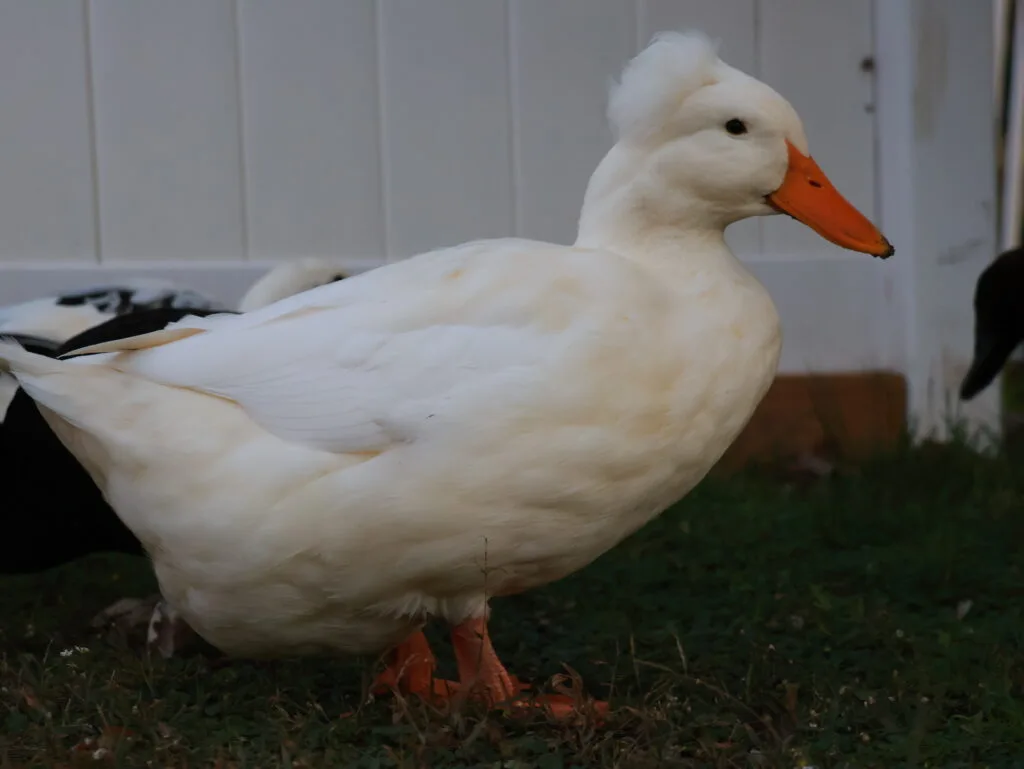
It’s important to note that weight gain in ducks should be gradual. A significant or sudden increase in weight may indicate health problems, such as obesity, which can negatively affect a duck’s overall health and laying capabilities. Additionally, weight gain should be monitored alongside other signs of egg-laying, such as vent and pelvic bone changes, to confirm that it’s related to reproductive processes.
Bill Freckles
Bill freckles are small, pigmented spots that appear on the surface of a duck’s bill, primarily due to natural pigmentation changes. These freckles are most common in female ducks, especially during their laying cycles. As hormonal levels fluctuate, particularly reproductive hormones, they can influence the distribution of melanin, the primary pigment responsible for these markings. Melanin is the pigment that gives color to the skin, feathers, and, in this case, the bill.
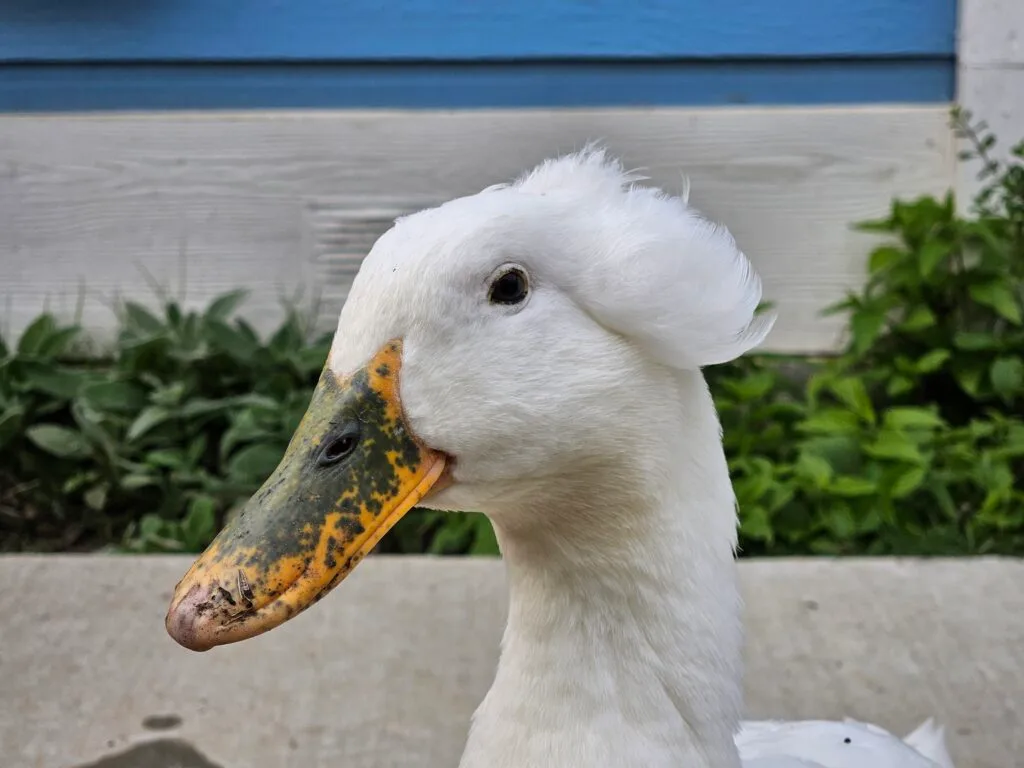
In female ducks, as reproductive hormones increase during egg-laying periods, they can trigger the production or redistribution of melanin in specific areas of the bill. This process results in the characteristic freckling or mottling pattern, which can range from faint specks to more pronounced, defined spots. The positioning and intensity of these freckles can vary significantly depending on the individual duck and its breed.
Freckling is generally harmless and is a natural part of a female duck’s physical changes during laying cycles. However, if a duck suddenly develops unusual pigmentation or if existing freckles become darker or more widespread than usual, it could signal an underlying health issue, such as nutritional imbalances or stress. Regular observation of bill freckles can be a useful tool for monitoring a duck’s overall health. Any significant changes in pigmentation might warrant a closer look or a consultation with a veterinarian to rule out potential health concerns.
4. Laying Schedule
Ducks typically lay eggs early in the morning or sometimes overnight. Check nesting areas at these times to see if there are any fresh eggs.
Ducks typically lay one egg per day during peak season, with 4 to 6 eggs a week being common. Their laying schedule is influenced by breed, age, and season.
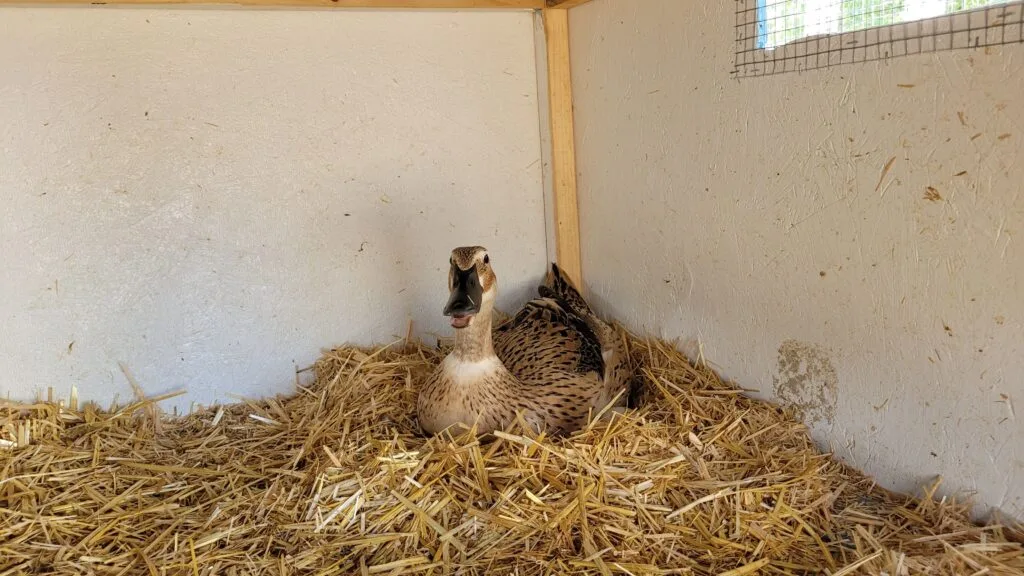
Frequency and Seasonal Influence:
- Spring/Summer: Ducks lay regularly when daylight hours are longer.
- Fall/Winter: Laying slows or stops due to shorter days, though artificial light can extend laying into winter.
Breed and Age Variations:
- Prolific layers like Khaki Campbells and Indian Runners may lay up to 300 eggs a year, while others, like Pekins, may lay less.
- Young ducks start laying around 6 months, but older ducks may reduce egg production.
Lighting and Rest:
- Ducks need 12-14 hours of light to maintain laying cycles, with natural light triggering hormone changes. Artificial lighting can encourage year-round laying but is not recommended as it depletes their energy.
- Broodiness can cause ducks to take breaks from laying, especially in certain breeds.
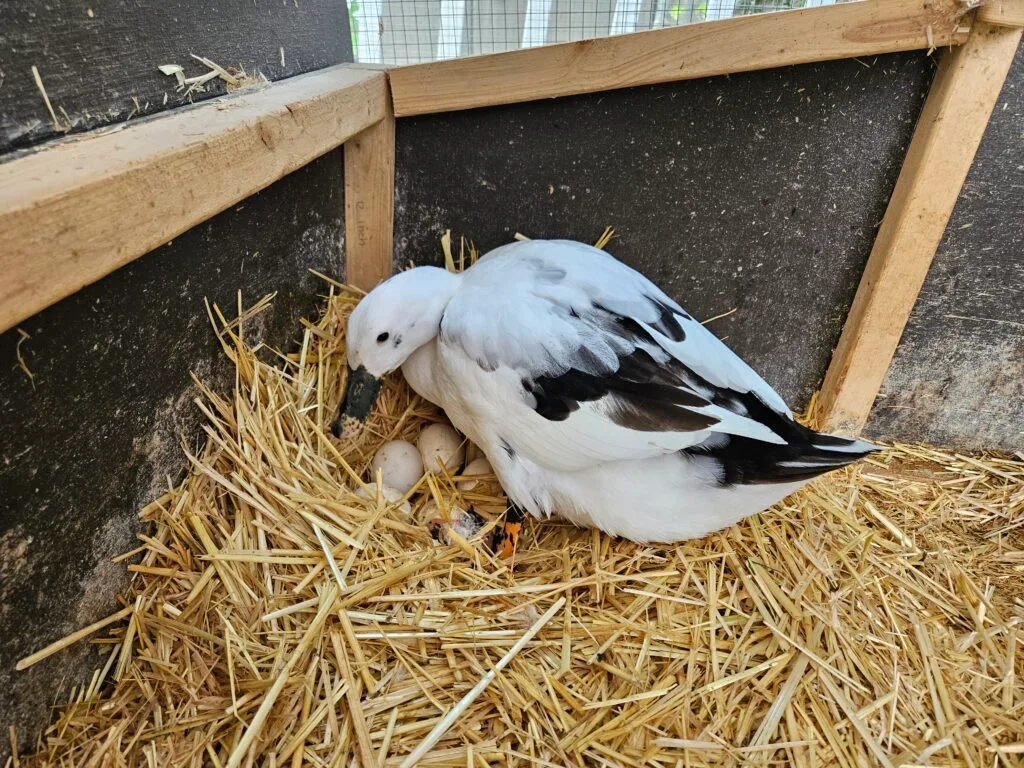
Health and Egg Quality:
- Stress, poor diet, or health issues can disrupt laying. Calcium is vital for strong eggshells.
- Irregular laying can happen naturally, but sudden drops in production should be monitored for health concerns.
Tracking egg production with a simple chart can help identify any changes in their cycle.
5. Behavioral Quirks of New Layers
When ducks first begin laying, their behavior can be a little “goofy.” They might appear confused or anxious, and it can take up to a month for them to settle into a regular laying routine. During this time:
- You may find eggs in unusual places or notice the ducks scratching around in their nests and spreading bedding everywhere.
- Eggs may look unusual, such as being soft-shelled, thin-shelled, or even large double-yolked eggs.
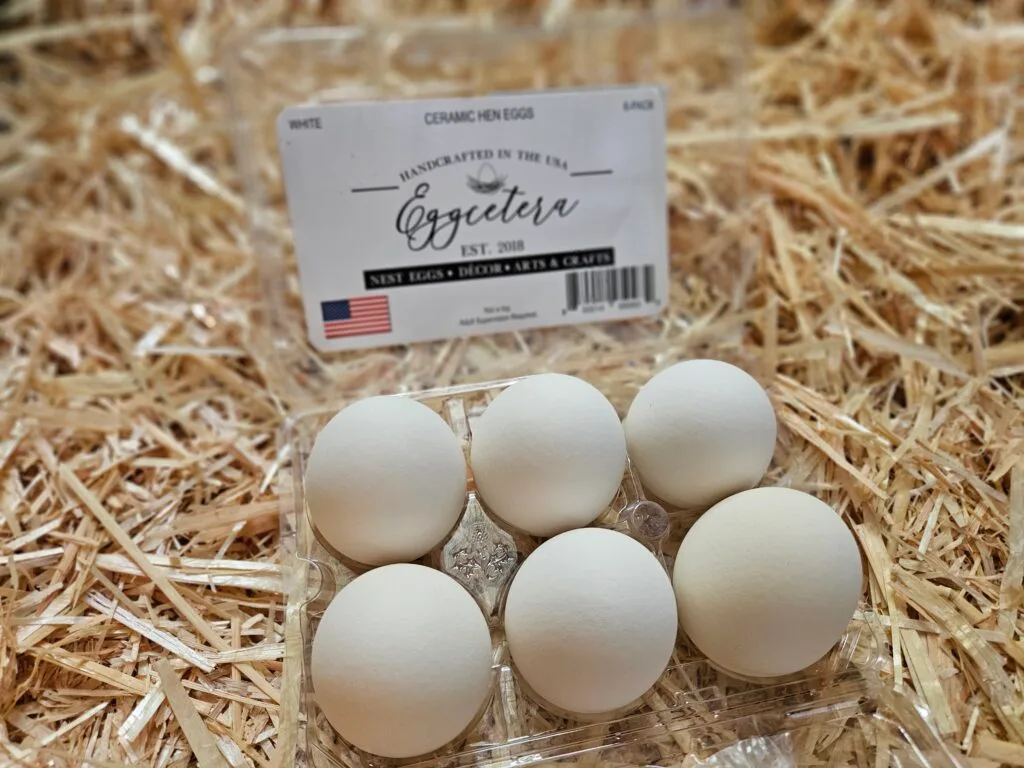
Pro Tip: Placing fake eggs or golf balls in nesting areas can help show new layers where to lay.
6. Checking for Eggs
When collecting eggs, it’s important to regularly check the nesting area to ensure you’re not missing any hidden eggs. Ducks tend to lay in specific spots, so the nests that are consistently filled with eggs are likely the most active. However, unlike chickens, ducks are not always as consistent about using designated nests. Ducks are known for laying eggs in random spots, and you may find eggs scattered around the yard, tucked under bushes, or even inside their pool.
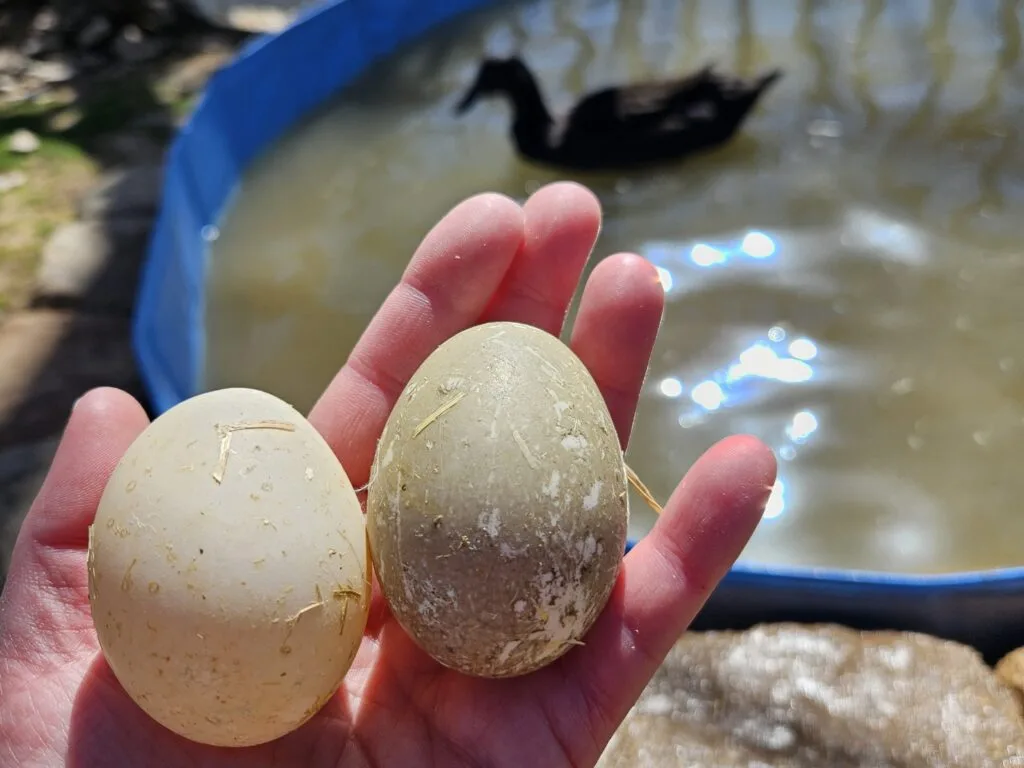
Once you start finding eggs, observe which ducks frequent these areas. Keep track of which ducks are spending time in the nesting boxes or areas, as this can give you valuable clues about who’s actively laying. Some ducks may visit the nests more frequently or stay longer, which could indicate they’re the ones producing the eggs. If your flock is large, it might take some time to identify the active layers, but consistent observation will help you see patterns and figure out who is laying.
In some cases, you may find eggs from multiple ducks in the same nest, especially if there are more nesting boxes than ducks. Ducks may “share” nests, and some might even try to lay in the same spot, leading to multiple eggs in one location.
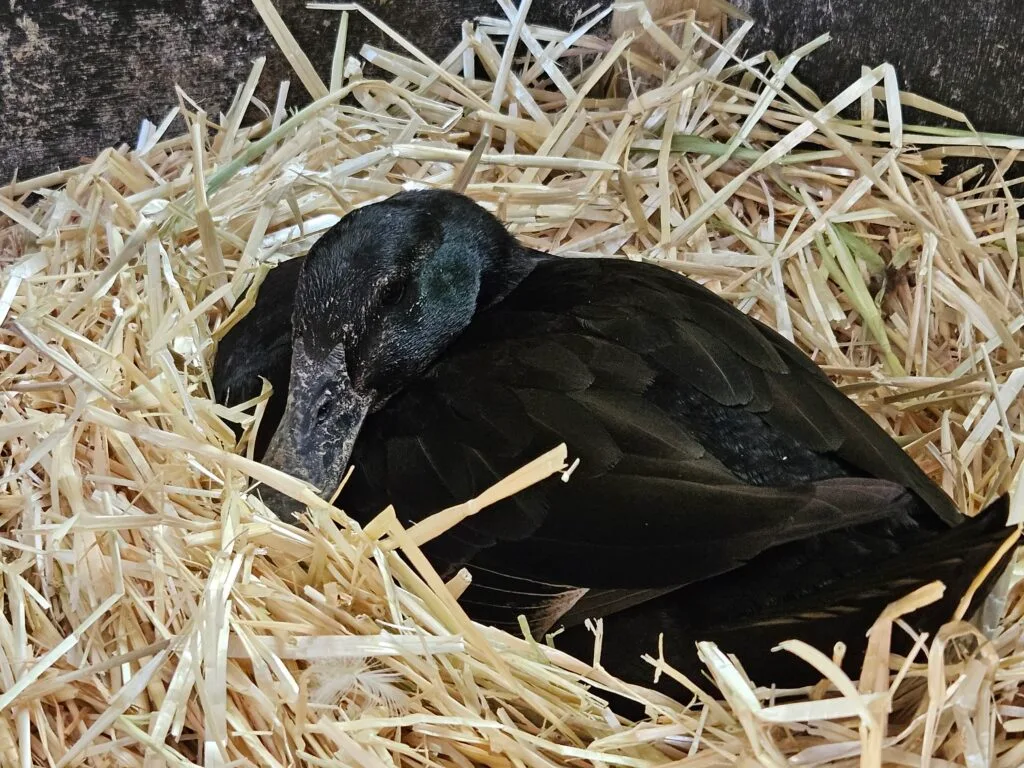
Installing a camera in the duck coop can be extremely helpful in making this observation easier. A camera will let you monitor the nesting areas without disturbing your ducks. We personally use a Ring camera in our duck coop, which allows us to monitor the activity in the nests, especially when we can’t be there to observe in person. This gives us a clear picture of which ducks are laying and helps us spot any potential health concerns or changes in egg production.
By tracking which ducks are laying, you can ensure their well-being and confirm that egg production is progressing smoothly. If a particular duck isn’t laying or seems unwell, it may be time to check for potential health issues or environmental stressors.
7. Supporting Your Laying Ducks
To ensure healthy egg production, it’s crucial to provide your ducks with the right nutrition, a comfortable environment, and proper care. Supporting your laying ducks involves several key factors that help promote their health and encourage consistent egg-laying.
Balanced Diet:
A healthy, balanced diet is essential for laying ducks. They require a mix of protein, vitamins, and minerals to support their egg production. High-quality poultry feed formulated for layers provides the right balance of these nutrients. Ducks also benefit from fresh greens, grains, and certain vegetables, but it’s important not to overfeed them with treats, as this could interfere with their nutritional intake.
➡️ Read our guide to a Healthy and Nutritious Pet Duck Diet
Calcium for Strong Eggs:
One of the most important elements for laying ducks is calcium. Calcium is vital for forming strong eggshells, and ducks who don’t get enough can experience soft, thin shells or even egg-bound issues.
To ensure your ducks are getting enough calcium, provide oyster shells as a supplement. Scratch and Peck makes a great calcium supplement that can be offered in a separate container, allowing your ducks to eat as needed. This will help ensure they have a steady calcium source.
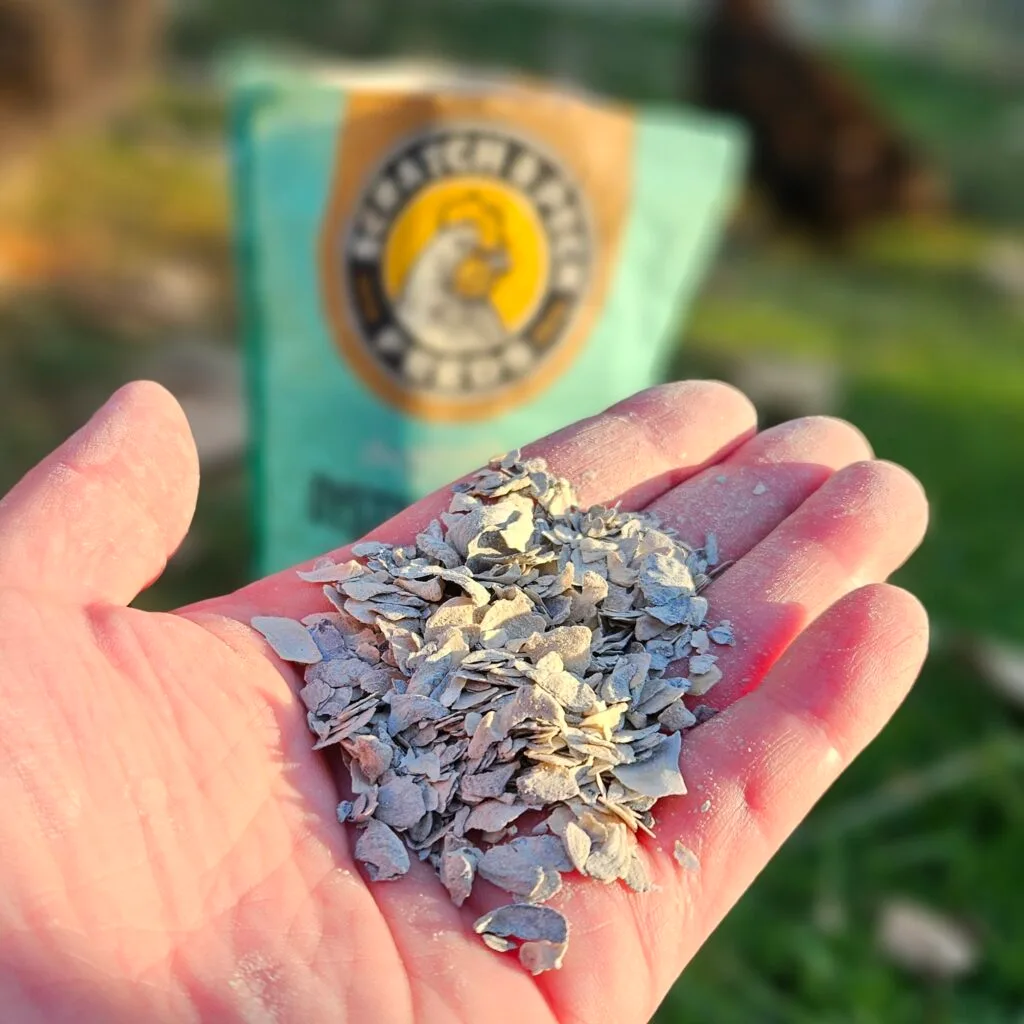
Pro Tip: If you have old eggshells from your ducks, you can grind them up and offer them as an additional calcium source. Simply clean, dry, and crush the shells into small pieces or grind them into a powder and offer them alongside the oyster shells. This is an excellent way to reuse old eggshells and provide more calcium in their diet.
Protein Intake:
Protein is also important for ducks, especially when they’re laying. Protein supports muscle health and overall egg production. A layer feed with 16-18% protein should meet their needs. You can also supplement with protein-rich treats like mealworms or grubs but be careful not to overfeed these, as they can be high in fat.
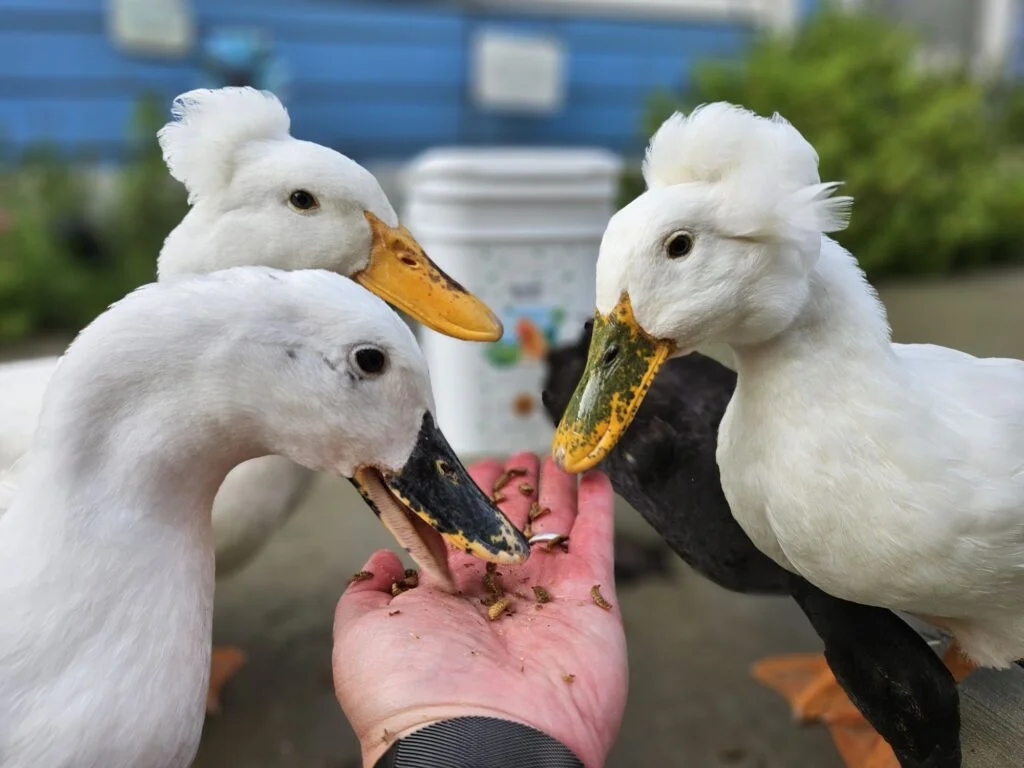
Fresh Water:
Access to fresh, clean water is crucial, especially during laying. Ducks need plenty of water to stay hydrated, support digestion, and maintain overall health. Make sure your ducks have access to water throughout the day, and replace it regularly to keep it clean.
Quiet, Secure Nesting Areas:
A safe, quiet, and comfortable nesting area is essential for encouraging your ducks to lay regularly. Ducks prefer a calm, private space to lay their eggs, free from stress or disturbances. Provide nesting boxes lined with soft bedding like straw or hay to make the area more inviting. The nesting area should be dry, well-ventilated, and free from predators.
Environmental Considerations:
Ducks are sensitive to changes in their environment. Overcrowding, noise, or the presence of unfamiliar animals can stress them and disrupt laying. Make sure the area where your ducks live is secure, spacious, and peaceful. If you’re experiencing season changes, be mindful of how fluctuations in temperature and daylight affect egg production.
Lighting and Temperature:
Ducks need 12-14 hours of light per day to maintain a healthy laying cycle. During the winter months, consider using artificial lighting to extend the day and encourage consistent laying. It’s also important to protect your ducks from extreme weather. Provide a warm, dry shelter to keep them comfortable, especially during colder months.
Duck Egg-laying Essentials in Review
Is My Duck Laying Eggs? Understanding and observing the changes in your ducks’ behavior, appearance, and routines during their laying cycles can give you valuable insight into their health and well-being. From their nesting habits to physical indicators like pelvic bone spacing and feather condition, each clue helps you better support their needs. Providing a safe, quiet environment, a well-balanced diet, and monitoring subtle signs like bill freckles or behavioral shifts ensures your ducks have everything they need to thrive during this important phase.
Remember, every duck is unique—some may follow predictable patterns, while others like to keep us guessing (and occasionally hunting for eggs in the yard!). By staying attentive and proactive, you can create a harmonious environment where your ducks feel comfortable and confident in their laying process. So, keep a watchful eye, stay flexible, and enjoy this fascinating part of duck keeping!

